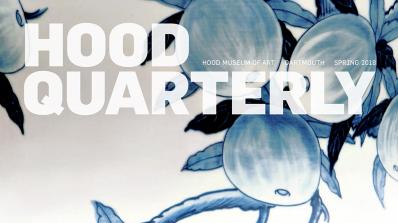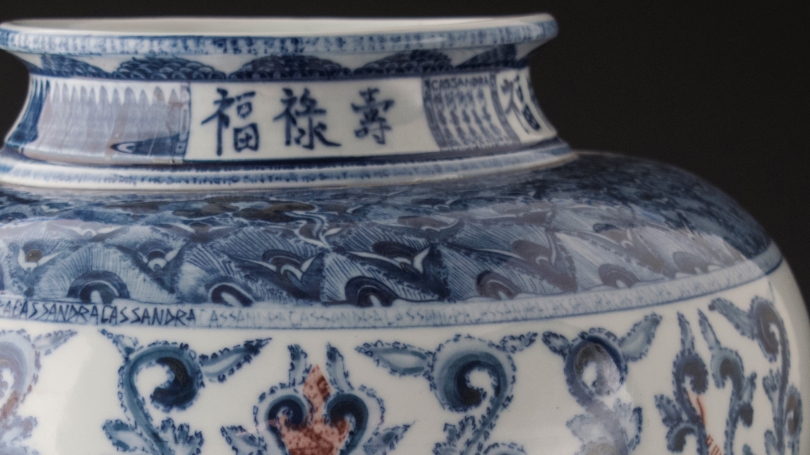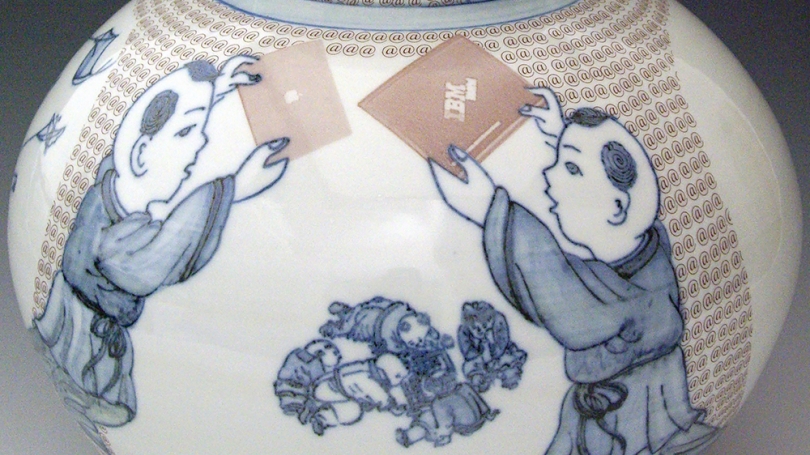Sin-ying Ho: Past Forward
"Sin-ying Ho has developed one of the more unique voices in contemporary clay."
Denise Patry Leidy, Ph.D.
A professor at Queen’s College, City University of New York, Sin-ying Ho, whose work has been widely shown and collected, has developed one of the more unique voices in contemporary clay. she immigrated to Canada in 1992, initially to pursue a career in acting. After receiving a degree in ceramics from Sheridan College in Ontario in 1995, Ho also earned a 1997 BFA in ceramics from the Nova Scotia School of Art and Design in Halifax and a 2001 MFA from Louisiana State University in Baton Rouge.
Her training reflects the diversity of approaches to ceramic-making in North America in the late twentieth century. While in Novia Scotia, Ho was introduced to practices that featured stoneware as a medium and were grounded in a mid- twentieth-century preference for Sino-Japanese traditions that can be traced to the eleventh and twelfth centuries and the spread of Zen (or Chan) Buddhism from China to Japan. Reverence for stoneware in the West reflects the influence of potters such as the British artist Bernard Leach (1887–1979) and philosopher/critics such as the Japanese academic Yanagi Sōetsu (1889–1961), who extolled (and romanticized) a vision of the studio—as opposed to commercial—potter as an individual who threw, glazed, and painted his/her own unique pieces.
Ho’s time in Louisiana, on the other hand, introduced her to porcelain as a medium, and to the conceptual use of clay for personal and political expression. Ho’s choice of porcelain, a material largely disdained by studio potters in the first half of the twentieth century due to its use in factories and other commercial enterprises, stems in part from her first trip to the city of Jingdezhen in Jiangxi Province in southeast China in 1996. Popularly known as the “porcelain city” in current Western writing, Jingdezhen flourished in the eleventh and twelfth centuries, became the center for the manufacture of blue-and-white (that is, porcelain painted with cobalt blue under a transparent glaze) in the mid-fourteenth century, began to serve the Chinese court in the early fifteenth century, and remains one of the primary centers of global porcelain production today. First used in China around the sixth century, porcelain, a combination of a clay known as kaolin and the feldspathic rock petuntse that fires at temperatures of 1200 to 1400 degrees, was one of the great discoveries in global ceramic history. It was produced in Korea in the fifteenth century and Japan in the early seventeenth century, and was finally created in the West in 1708 at Meissen in Germany. The reemergence of porcelain in studio, or art, pottery, in the 1970s and 1980s coincides with the ability of artists from around the world to live, work, and study in Jingdezhen.
Identity (slides 1 and 2) from 2001 is one of a series of Ho’s works exploring the collision of Western and Eastern cultures. The shape, which can be traced to a form first produced during China’s Neolithic period (about 6500–1500 BCE) and was used to store grain and wine, was introduced to Western ceramics as part of a global trade in Chinese porcelain. The organization of the decoration of the surface with differing patterns at the neck, body, and foot follows well-established Chinese traditions. The overall design, however, subtly blends Chinese and Western imagery. The three Chinese characters written under the lip read fu, Lu, shou, or blessings, wealth, and long life, an auspicious triad often referenced in word and image in Chinese art. The geometric pattern at the neck and under the lip also derives from earlier Chinese traditions transmitted to the West through trade in porcelain, as do the floral sprays at the base. The rococo cartouches that fill the body of the jar, on the other hand, are based on the devices often used to display aristocratic crests in European art, and on Chinese porcelain created for trade with Europe. Ho has incorporated details from her identity card as a Hong Kong resident and her passport into this European device. In addition, her English name, Cassandra, which was required in Hong Kong during British rule (1841–1997), is endlessly repeated in the borders that separate the imagery on the body of Identity from that of the foot and neck.
The double-gourd shape of Future Is in Our Hands (slides 3 and 4) from 2008 is also a traditional Chinese form—one long associated with the religion of Daoism and the search for immortality. Set against a background of “at” signs, a visual trope for endless and immediate global interactions, two Chinese boys lift personal computers, another reference to the speed and ease of connections between individuals and cultures. Some Chinese children huddle together, and others fly kites, while a Western family plays a video game and a Western child plays hopscotch on numbers in the shape of dollar bills.
The red and blue used to decorate Future Is in Our Hands, a palette that defines Ho’s works, are also the first two colors used for Chinese porcelain in the mid-fourteenth century. Red, derived from copper, was fugitive and soon disappeared as a pigment. Blue, from cobalt, has become synony- mous with “china,” a word used as a synonym for porcelain in the West. While the cobalt in Ho’s work is hand painted, the red designs are created with computer designed, digitally printed decals, a technology she discovered in graduate school and stuck with because she liked the pixilation that occurs in the process. Her choice challenges the understanding that transfer printing for the decoration of porcelain, an eighteenth-century British development, is a commercial rather that artistic technique. In addition, Ho often uses terra sigallata, a highly refined clay slip developed by Roman potters to give a soft sheen to the surface of her works, as well as the transparent glazes often covering porcelains.
Denise Patry Leidy, Ph.D., is the Ruth and Bruce Dayton Curator of Asian Art and head of the Department of Asian Art at the Yale University Art Gallery in New Haven, Connecticut. Her scholarly areas of interest are Chinese sculpture and decorative arts, as well as Buddhist sculpture.
This text is excerpted from Denise Leidy’s essay in the Hood Museum of Art’s exhibition brochure for Sin-ying Ho: Past Forward. Printed copies of the brochure are available free of charge at Hood Downtown, and a PDF file of the brochure may be downloaded here.




